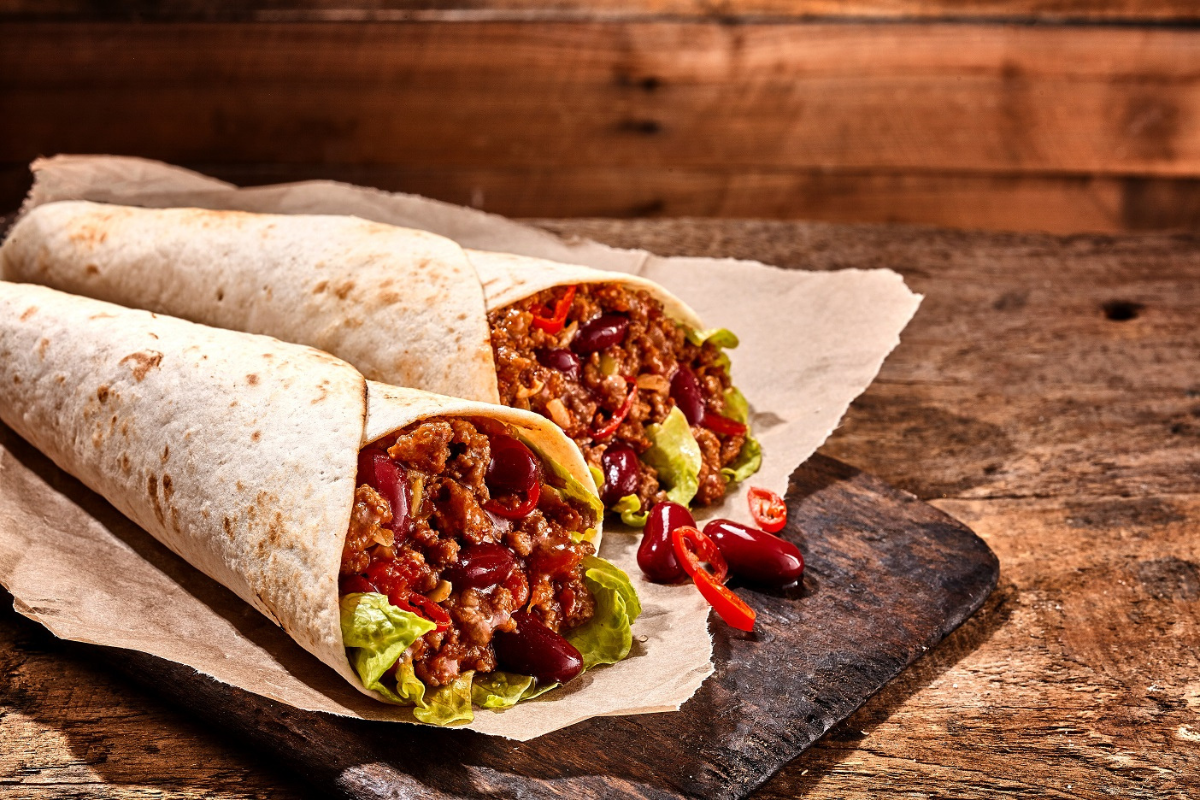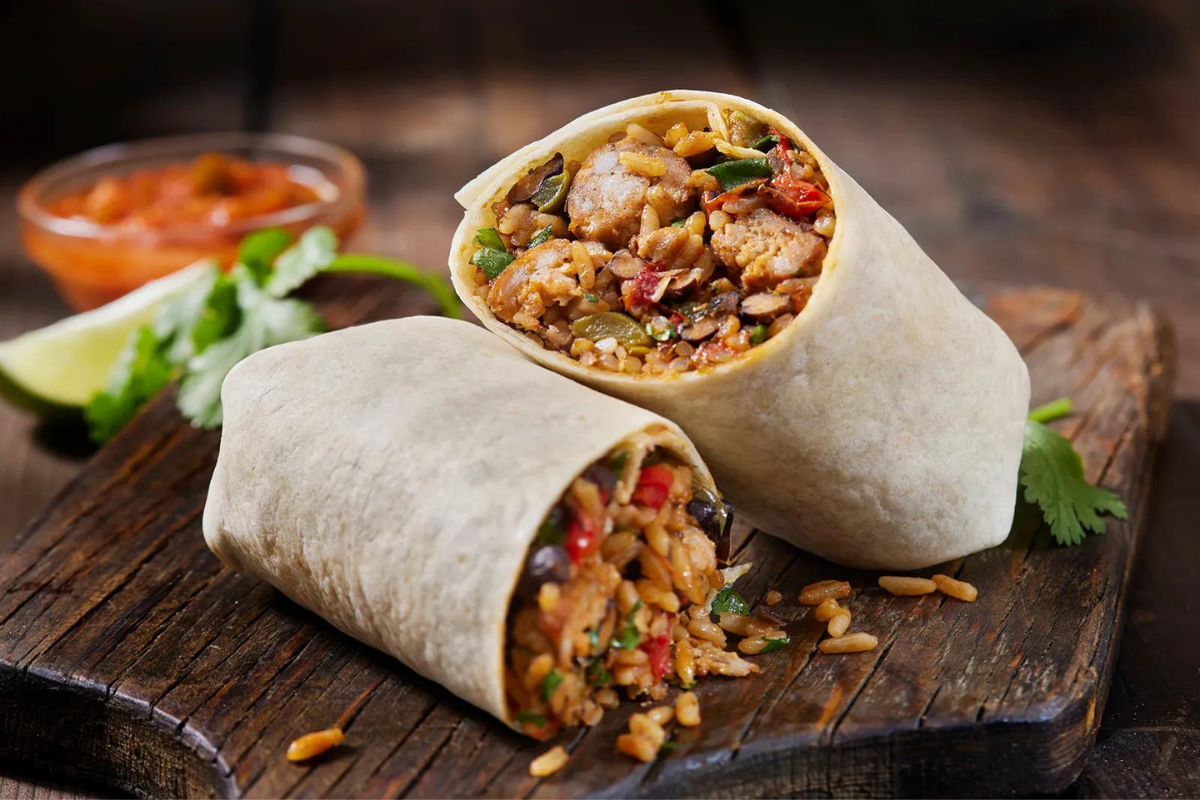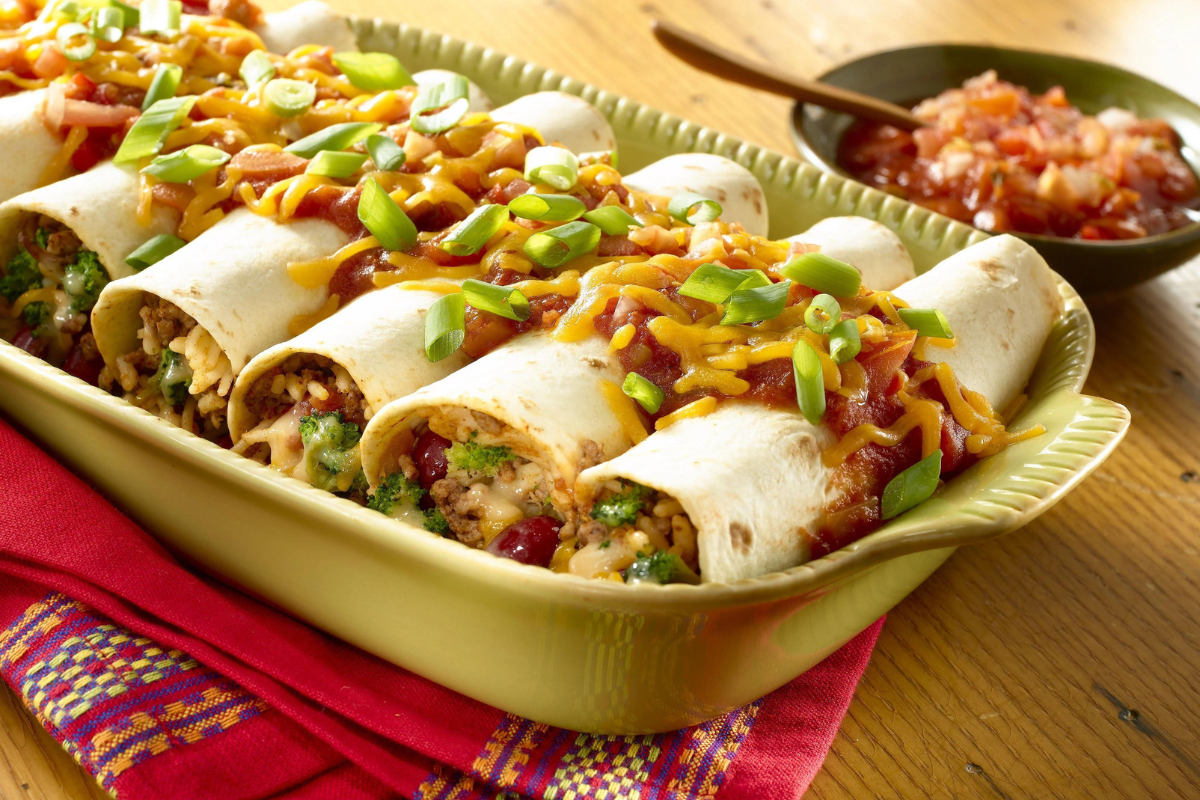The humble burrito, a tightly wrapped package of comfort and flavor, has transcended borders to become a beloved food worldwide. But its origins are firmly rooted in the rich culinary traditions of Mexico. This exploration delves into the history of the burrito, tracing its evolution from a practical necessity to a celebrated dish.

Photo: Isle Of Wight Meat
While the exact origin story of the burrito remains shrouded in some mystery, the practice of using corn tortillas as a vessel for food stretches back millennia. Mesoamerican civilizations, flourishing in what is now Mexico as early as 10,000 B.C., are credited with developing these flatbreads. These early tortillas likely served as a convenient and portable way to hold and consume various fillings.
One popular origin story for the burrito centers around Juan Méndez, a resourceful food vendor from Chihuahua, Mexico. During the Mexican Revolution, Méndez is said to have sold food to ranch hands from a cart pulled by a donkey. To keep his fillings warm for extended periods, he supposedly wrapped them in large flour tortillas, creating a portable and satisfying meal.
The early 20th century saw significant migration from Mexico to the United States, particularly to border states like California. These migrants brought their culinary traditions with them, and the burrito began to appear on menus in Los Angeles restaurants during the 1930s. El Cholo Spanish Cafe, a historic establishment still operating today, is credited with being among the first to offer burritos to American customers.
Evolution and experimentation: The burrito takes flight
The burrito’s journey in the United States has been one of continuous adaptation. Mexican immigrants in California, particularly those from Sonora, are believed to have introduced the use of flour tortillas for burritos, a departure from the traditional corn tortillas used in Mexico. Additionally, the fillings diversified beyond just meat to incorporate beans, rice, cheese, and various vegetables.

Photo: Chulas Cantina
The latter half of the 20th century saw the rise of fast food chains specializing in Mexican cuisine. These chains, particularly those in California, played a pivotal role in popularizing the burrito. They introduced concepts like the “wet burrito,” smothered in sauce or cheese, and experimented with an ever-growing range of fillings. This period gave birth to the iconic “California burrito,” a large flour tortilla overflowing with ingredients, a far cry from the simpler versions likely consumed in Mexico.
From its humble beginnings in Mexico, the burrito has become a global phenomenon. Burrito restaurants can be found in almost every corner of the world, each region offering its own interpretations and variations. From breakfast burritos to vegetarian and vegan options, the adaptability of the dish is a testament to its enduring appeal.
The burrito represents more than just a delicious food but a symbol of cultural exchange and adaptation. Its journey from a practical necessity to a global favorite reflects the power of food to connect people across borders and generations. As the burrito continues to evolve, one thing remains constant: its ability to bring people together over a warm, comforting, and endlessly customizable meal.
Mexican immigration and the transformation of American tastes
The arrival of Mexican immigrants in the United States, particularly in the 20th century, had a profound impact on American cuisine. Beyond the introduction of the burrito, Mexican immigration ushered in a wave of new flavors, ingredients, and cooking techniques that fundamentally altered American palates.
One of the most significant contributions was the introduction of chiles, a diverse family of peppers central to Mexican cooking. From the fiery jalapenos to the smoky chipotles, these peppers added a whole new dimension of heat and complexity to American dishes. Mexican staples like beans, rice, and corn also found their way into mainstream American cuisine, enriching the national palate with their versatility and affordability.

Photo: News Clue
Mexican immigration also brought new cooking techniques like slow-braising meats in rich sauces and using fresh herbs for vibrant flavor. These techniques influenced American dishes like stews and chilis, adding depth and character to previously bland preparations.
The impact wasn’t limited to ingredients and techniques. Mexican street food culture, with its focus on fresh, portable, and affordable meals, resonated with American consumers. This influence can be seen in the rise of food trucks and the growing popularity of casual, quick-service restaurants offering Mexican fare.
Mexican immigration played a vital role in transforming American cuisine from a primarily European-influenced culinary landscape into the vibrant and diverse tapestry it is today. It exposed Americans to a whole new world of flavors and sparked a love affair with Mexican food that continues to this day.
A tale of two tortillas: Regional burrito variations in Mexico
While the image of a large flour tortilla overflowing with fillings might dominate popular perception, the burrito story in Mexico is far more nuanced. Regional variations abound, showcasing the rich tapestry of Mexican cuisine.
In Northern Mexico, particularly in Chihuahua and Sonora, the birthplace of the burrito as some believe, flour tortillas reign supreme. Here, burritos are known for their simplicity, often filled with carne asada, a type of grilled steak, beans, rice, and a touch of salsa. These burritos are a testament to their practical origins, offering a hearty and portable meal for ranch hands and travelers.
Central Mexico, particularly in the regions of Guerrero and Michoacán, offers a different perspective. Here, corn tortillas are the preferred choice, often filled with regional specialties like carnitas, a kind of braised pork or barbacoa, also known as slow-cooked shredded meat. These fillings are often accompanied by a salsa verde, a vibrant green tomatillo salsa, adding a burst of freshness to the dish.

Photo: Evemoir
Venture south to Oaxaca and you’ll encounter another twist on the burrito. Here, Oaxacan breakfasts often feature a regional take on the burrito. Wrapped in thin, locally made tortillas, these breakfast burritos might be filled with black beans, fried plantains, cheese, and a drizzle of mole, a rich and complex Oaxacan sauce.
The Yucatan Peninsula offers a unique twist with cochinita pibil, a kind of achiote-marinated pork burritos. Wrapped in corn tortillas, these burritos showcase the unique Mayan influences of the region. Pickled red onions often find their way into the fillings, adding a tangy counterpoint to the rich pork.
Each region boasts its own take on this iconic dish, reflecting the local ingredients, cooking traditions, and cultural preferences. From the simplicity of the north to the vibrant flavors of the south, the regional variations of the burrito offer a fascinating glimpse into the rich tapestry of Mexican cuisine.

